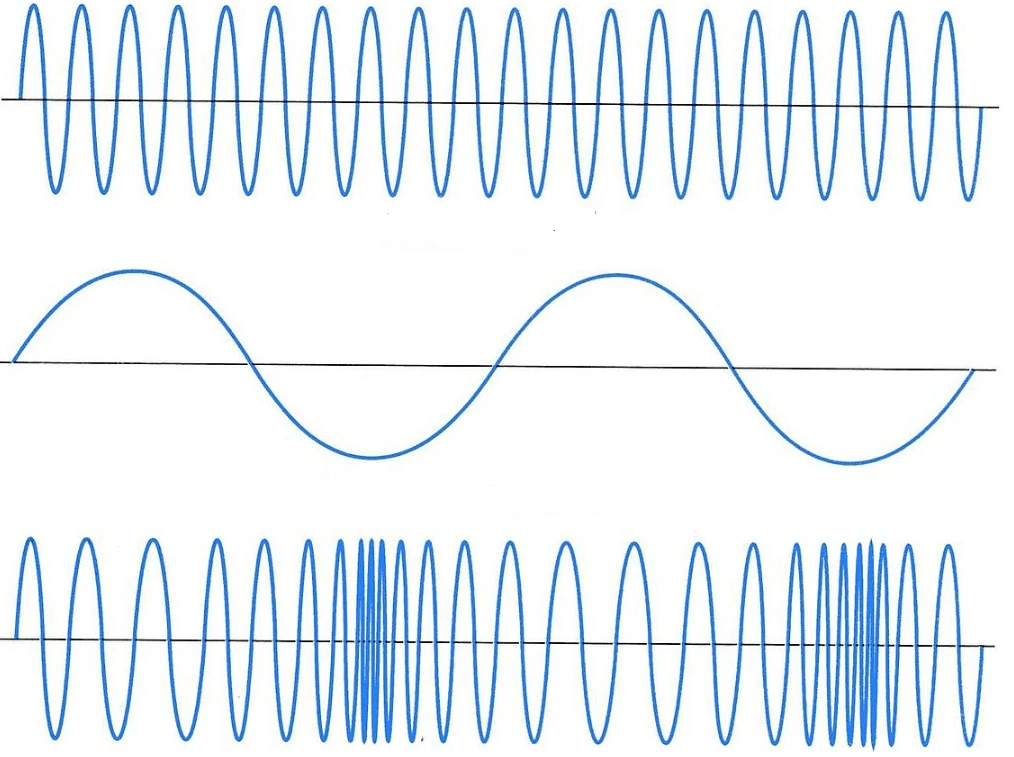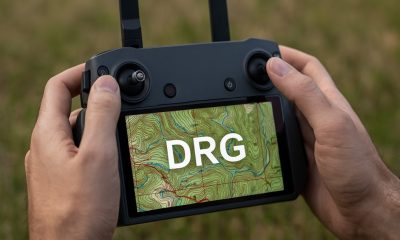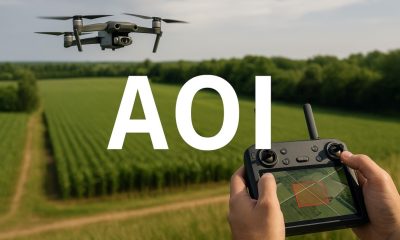- Acronym Guide
- AAM
- ABS
- AC
- ACAS
- ADS-B
- AFAC
- AGL
- AI
- AIM
- ALS
- AM
- AMA
- ANSP
- AOI
- APPI
- AUV
- AUVSI
- ARPAS-UK
- ASTM
- ATC
- BVLOS
- CAA
- CAAC
- CAB
- CASA
- CATT
- CBO
- CBR
- CBRN
- CDMA
- CDR
- CFR
- CIR
- COA
- COMINT
- CORS
- COTP
- COTR
- CPTED
- CV
- C2
- DAA
- DEM
- DFI
- DFS
- DGCA
- DHS
- DOD
- DPA
- DPEs
- DRG
- DRO
- DSM
- DSMX
- DSP
- DSSS
- DTM
- EASA
- EFT
- EO
- EOD
- EO/IR
- ELINT
- EMI
- ESC
- EVLOS
- eVTOLs
- FAA
- FCC
- FCS
- FHSS
- FICCI
- FLIR
- FOB
- FOV
- FPS
- FPV
- GBDAA
- GCP
- GCS
- GDPR
- GML
- GNSS
- GPS
- GSD
- GVC
- HDR
- HOGE
- IACRA
- ICAO
- ICS
- IMU
- INS
- IR
- ISA
- ISR
- ITU
- JARUS
- LAAMS
- LAANC
- LAATM
- LAI
- LBA
- LIDAR
- LOS
- LSALT
- MAC
- MAVLink
- MLIT
- MMS
- MSL
- MTOM
- NDAA
- NCSL
- NFZ
- NIST
- NMEA
- NOTAM
- NPA
- NPRM
- NTIA
- OEM
- OFDM
- OOP
- PASM
- PAV
- PCV
- PdM
- PEC
- PIC
- PID
- PIPL
- PLD
- PM
- PN
- PPK
- PPS
- PSM
- PWM
- UAM
- UAOP
- UAS
- UASTM
- UAV
- UCAVs
- UHD
- UHF
- USV
- UTM
- RAIM
- RCC
- RCS
- RFI
- ReOC
- RePL
- RMS
- ROI
- RPAS
- RPC
- RTH
- RTK
- SaR
- SAR
- SARP
- SBAS
- S.Bus
- SBIR
- SEDENA
- SfM
- SFOC
- SIGINT
- SLAM
- SMS
- SORA
- STANAG
- STTR
- sUAS
- TCAS
- TCCA
- TFR
- TIN
- TOF
- TP
- TPS
- TSA
- VHF
- VLOS
- VTOL
Drone Acronyms
What is PM (Phase Modulation)?
By
Jacob StonerTable Of Contents

Definition
PM stands for Phase Modulation, a technique where the phase of the carrier wave is varied in accordance with the information being transmitted. In phase modulation, the amplitude and frequency of the carrier wave remain constant, while its phase shifts to encode the data. PM is widely used in communication systems, including digital and analog transmissions, and is a fundamental component of digital modulation schemes like QAM (Quadrature Amplitude Modulation).
Usage
Phase modulation is commonly found in various applications, such as radio communications, where it helps reduce interference and improve signal integrity. In the context of drones and UAVs, PM can be used for data transmission, telemetry, and control signals. Unlike AM or FM, PM offers a high degree of noise resistance, making it ideal for environments with significant interference or signal degradation.
Relevance to the Industry
PM is significant in the drone and communications industries due to its robust performance in noisy environments and its compatibility with digital signals. Many modern communication systems, including those used in drones, employ digital modulation methods that incorporate phase modulation to ensure reliable data transmission. Understanding PM is important for operators and engineers who work with UAV communication systems, as it forms the basis of many advanced modulation techniques used today.
How Does Phase Modulation (PM) Work?
Modulating the Carrier Signal:
- Carrier Wave and Phase Shifts:
- Constant Amplitude and Frequency: In phase modulation, the carrier wave’s amplitude and frequency remain constant, but the phase of the wave is altered according to the input signal. Phase represents the position of the waveform relative to a reference point, and by shifting this phase, PM encodes data into the carrier wave.
- Phase Shift Proportional to the Signal: The amount of phase shift varies in direct proportion to the amplitude of the input signal. For example, a higher amplitude in the input signal will produce a greater phase shift in the carrier wave. These shifts correspond to the variations in the data being transmitted, such as audio or telemetry signals.
- Encoding Data Using Phase Changes:
- Representing Data with Phase Transitions: In analog phase modulation, continuous phase changes represent the fluctuations of the input signal. In digital systems, phase modulation often takes the form of Phase Shift Keying (PSK), where specific phase shifts correspond to binary data. For example, Binary PSK (BPSK) uses two phase states (0° and 180°) to represent binary ‘0’ and ‘1’, while Quadrature PSK (QPSK) uses four phase shifts (0°, 90°, 180°, and 270°) to encode two bits per symbol.
- Modulation Index in PM: The modulation index in phase modulation represents the extent of phase variation in response to changes in the input signal. A higher modulation index indicates a larger range of phase shifts and allows for more data to be encoded per unit of time, which can be beneficial in digital applications where high data rates are required.
Transmitting and Receiving PM Signals:
- Signal Transmission:
- Broadcasting Over Airwaves: Once the carrier wave is phase-modulated with the data, it is amplified and transmitted through an antenna. Since PM does not alter the amplitude, it remains less susceptible to amplitude-based interference, making it well-suited for environments with a high level of noise.
- Long-Range and High-Fidelity Transmission: PM is often used in communication systems that require long-range, high-fidelity signal transmission, such as satellite communication, because it can maintain data integrity over long distances with reduced interference.
- Demodulation and Data Retrieval:
- Phase Detection at the Receiver: At the receiving end, a demodulator analyzes the incoming PM signal and detects the phase shifts. By measuring the differences between the phase of the received signal and a reference phase, the demodulator can reconstruct the original input signal.
- Digital Decoding: In digital PM systems like PSK, the demodulator interprets the phase shifts as binary data. This data is then decoded back into its original format, such as audio, video, or telemetry information, depending on the application.
Applications and Variants of PM:
- Digital Communication Systems:
- Phase Shift Keying (PSK): PM is the foundation of PSK, widely used in digital communication systems, including cellular networks, satellite links, and Wi-Fi. PSK’s use of discrete phase shifts to represent binary data provides a reliable method for high-speed data transmission, even in noisy environments.
- Quadrature Amplitude Modulation (QAM): QAM combines both phase and amplitude modulation to encode more data within the same bandwidth. By altering both the amplitude and phase, QAM allows for multiple bits to be represented per symbol, increasing the efficiency of data transmission. QAM is commonly used in digital TV broadcasting and broadband internet.
- Noise Resistance and Signal Integrity:
- Reduced Amplitude Sensitivity: Because PM does not depend on amplitude variations, it is less affected by amplitude-based noise, such as power fluctuations or signal fading. This makes PM especially useful in wireless communication where signal consistency is crucial.
- Improved Data Integrity: PM maintains high data integrity by being less susceptible to interference, ensuring accurate transmission of data even over long distances or in crowded radio environments.
Complex Modulation Schemes and Compatibility:
- Combining PM with Other Modulation Techniques:
- Quadrature Phase Shift Keying (QPSK): PM can be combined with other modulation methods to enhance data capacity and efficiency. QPSK, for example, uses four distinct phase shifts to represent two bits per symbol, doubling the data rate compared to BPSK.
- Orthogonal Frequency-Division Multiplexing (OFDM): PM is often used within OFDM systems, where it modulates multiple carrier frequencies simultaneously. This increases spectral efficiency and is widely used in modern communication systems like LTE and Wi-Fi.
- Applications in UAV and Drone Systems:
- Telemetry and Control Signals: PM’s resistance to interference makes it suitable for use in drone telemetry and control systems, where reliable data transmission is essential. It is particularly useful in environments with significant RF noise, ensuring that critical data like position, speed, and command instructions remain intact.
- High-Speed Data Links: For drones requiring real-time data links, such as those used in video streaming or sensor data collection, PM supports high-speed data rates, enabling stable and secure communication.
By encoding data through phase variations, Phase Modulation (PM) offers reliable and interference-resistant communication suitable for a range of applications, from simple telemetry to complex digital communication systems.
Example in Use
“The telemetry system on the drone uses phase modulation to maintain a stable data link, ensuring accurate position and speed data is transmitted back to the control station.”
Frequently Asked Questions about PM (Phase Modulation)
1. How does phase modulation differ from frequency modulation (FM)?
Answer: Phase modulation and frequency modulation differ in:
- Phase Modulation (PM): Varies the phase of the carrier wave to encode information, with the frequency remaining constant.
- Frequency Modulation (FM): Varies the frequency of the carrier wave to represent data, while the phase remains constant. Both methods are resilient to noise but serve different applications and technical requirements.
2. What are the advantages of using phase modulation?
Answer: Phase modulation offers several advantages:
- Noise Resistance: PM is less susceptible to amplitude-based noise, making it suitable for transmissions in noisy environments.
- High Data Integrity: PM maintains a consistent amplitude, which reduces signal degradation and ensures better data integrity over long distances.
3. What are common applications of phase modulation?
Answer: Common applications of phase modulation include:
- Digital Communication Systems: Used in digital schemes like PSK (Phase Shift Keying) and QAM for efficient data transmission.
- Satellite and Radio Communications: Employed for high-quality, interference-resistant communication in satellite links and some radio broadcasting systems.
For examples of these acronyms visit our Industries page.
As the CEO of Flyeye.io, Jacob Stoner spearheads the company's operations with his extensive expertise in the drone industry. He is a licensed commercial drone operator in Canada, where he frequently conducts drone inspections. Jacob is a highly respected figure within his local drone community, where he indulges his passion for videography during his leisure time. Above all, Jacob's keen interest lies in the potential societal impact of drone technology advancements.











